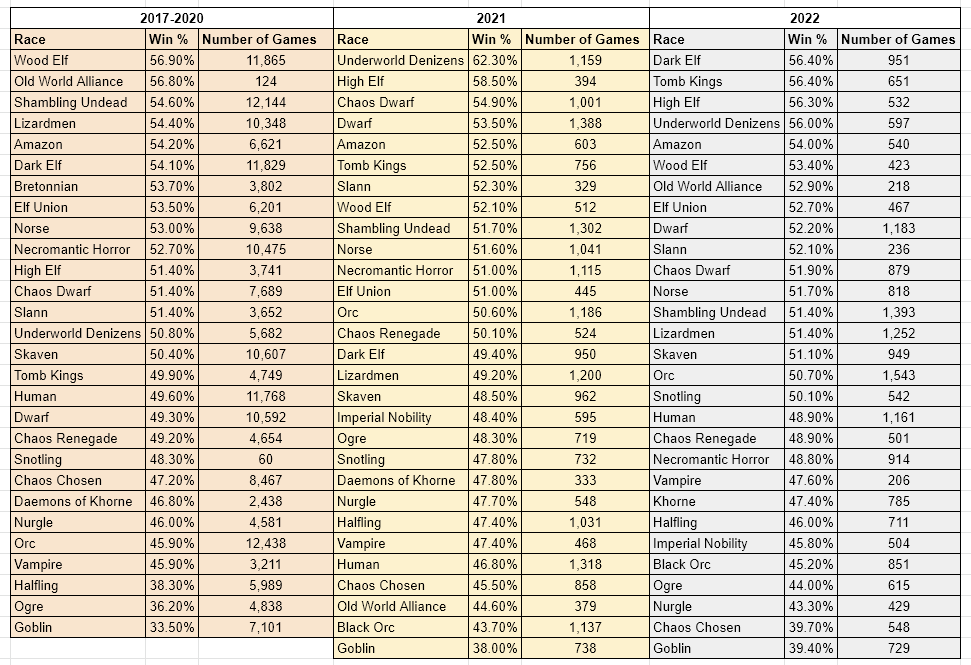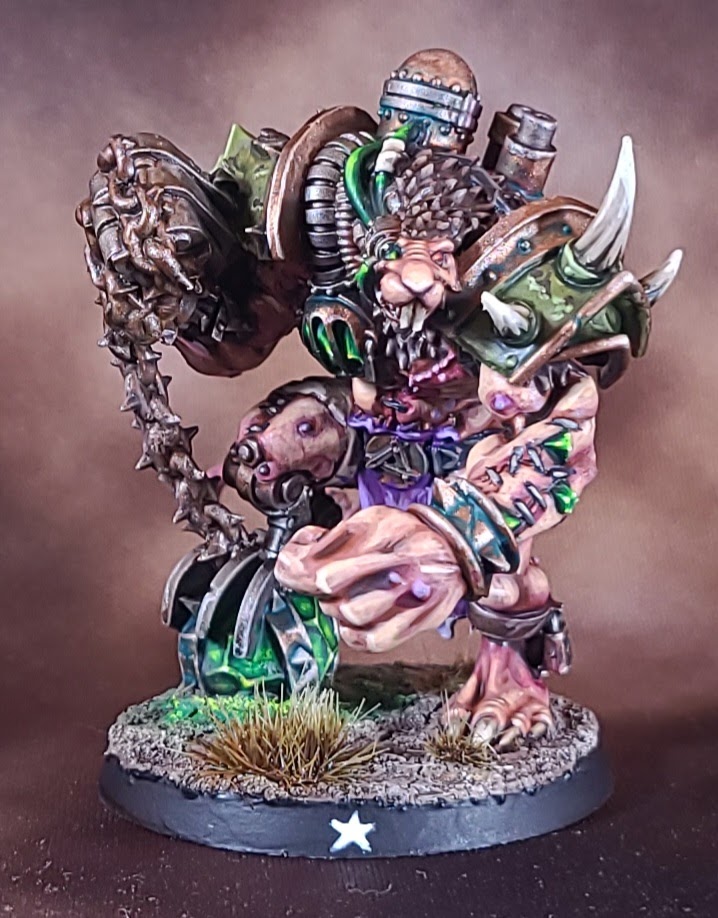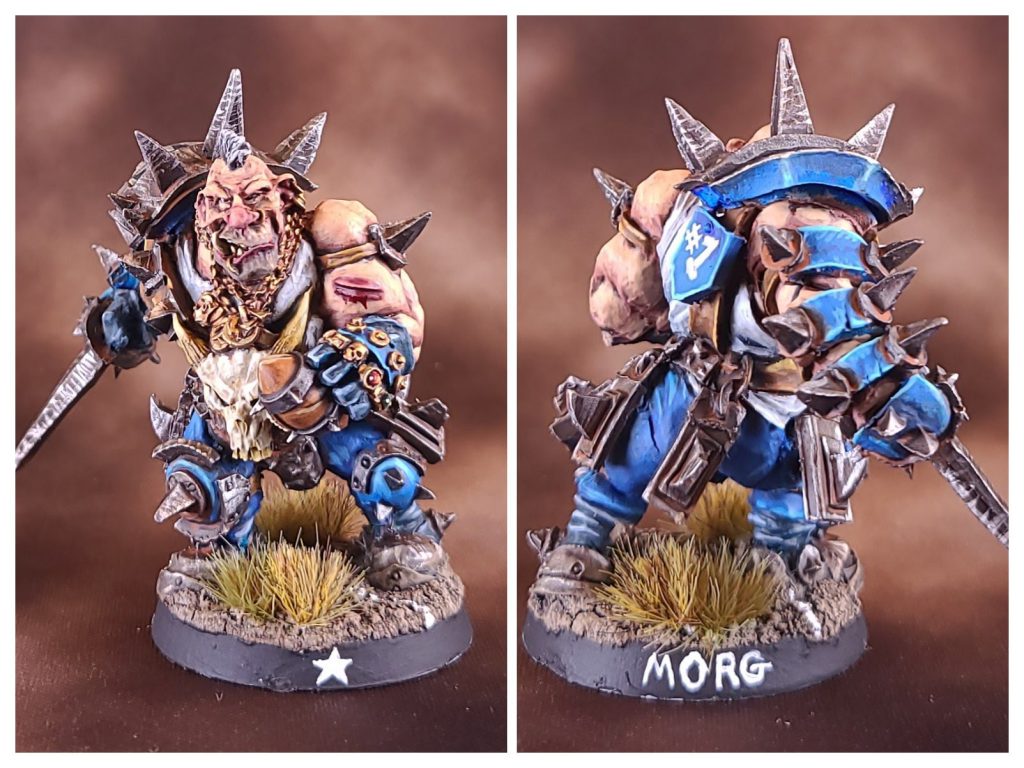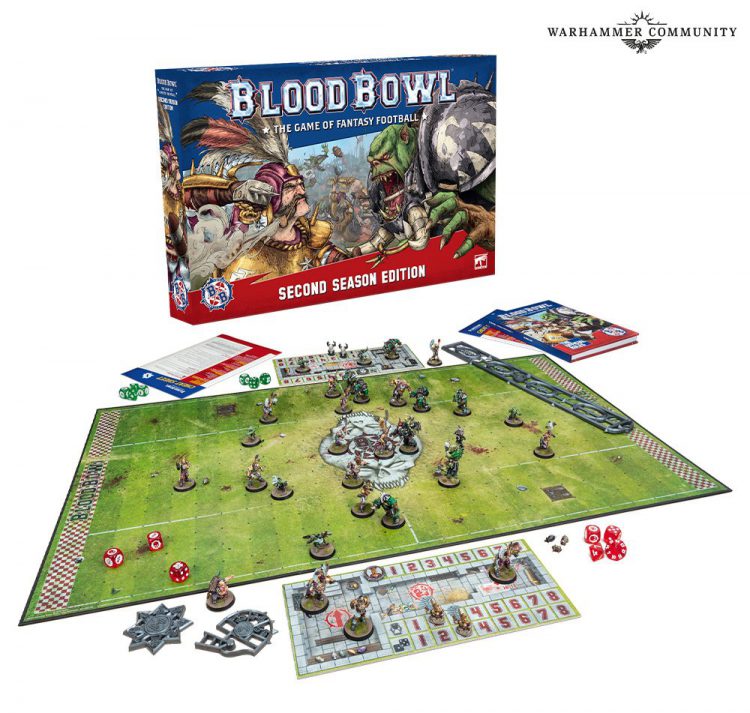Blood Bowl – State of the Competitive Meta
Half a year into 2022, and over a year and a half since the release of the latest Blood Bowl ruleset… and we have now seen thousands of games in the new era of competitive Tournament Blood Bowl. A scene which had been relatively stable for many years has been well and truly shaken up, and in this feature we’re going to take a look at the stats from this period and discuss some of the trends and stories that have emerged.
A Note on Data
All Data below is sourced from the NAF Tournament data as parsed by Mike Davies on his Tableau page. These stats currently cover Tournament play to the end of May 2022
Disclaimer: NAF statistics do not show any granularity on tournament rulesets or, for example, the inclusions of stars. We have no way of knowing if a Snotling team in our stats has been running a fun build with secret weapons, or if it is running an ultra competitive Morg + Hakflem build.
Win Rates
Below I’ve aggregated win rates for the following periods:
- The BB2016 era, with the ruleset used following GW’s re-release of the game in late 2016
- The first full year of play with the BB20 ruleset, in 2021
- The results of the current year so far

Let’s talk a little about the historical meta first. Barring the late charge of the initial release of Old World Alliance, BB had five teams who ruled the roost. Wood Elves, Lizardmen, Undead, Amazons and Dark Elves were teams that not only consistently found themselves in Tier 1 in rules packs (thus getting the least amount of benefit from them) but that also maintained the best win rates in the game.
The teams below them start to see a mix of Tier 1 teams who were reined in by their Tier, and Tier 2 teams who found success with their additional help. Lower down the list we see some very competitive teams who have very middle of the road win rates (Dwarves, Skaven).
And perhaps unsurprisingly, our historical meta is propped up by our iconic stunty teams.
The transformation of that meta in our first year of BB20 play speaks for itself. Our five dominant teams all crash several percentage points, some slipping to below 50% win rates. Underworld reach absolutely unprecedented heights. Both flavours of Dwarves soar, and several other previously-moribund teams find a way to shine.
And finally, looking at ‘22, the current post-faq era, we see that the old order has somewhat reasserted itself, though some of our new faces don’t appear to be going anywhere
Tournament Winners
Let’s contrast the above with the teams that are actually winning (or achieving runner-up) in Tournaments in the same time periods.

As with our historical win rates, we have some familiar names at the top of our pre-BB20 meta. The only reason Amazons are not as high as their usual peers is that they have always seen relatively low representation. On the flip side, some teams with low win rates but that have traditionally been very popular – and the poster boys for this category are Orcs and Humans – do show strongly here.
Fast forward to the initial year of BB20 and the shake-up is just as evident as the win rates showed, with Underworld capturing huge numbers of tourneys during this period. Halflings make a shock appearance in our top 10 as we see the impact of star-focused builds. Dwarves and Chaos Dwarves found strong matchups against some of these new meta teams, while also having star-capable builds of their own.
And in ‘22, we see many of our old meta friends returning to the podium places, but Dwarves ruling the roost so far.
So there’s the data. Now what have we learned?

Underworld and the new era of Blood Bowl
The case of Underworld is probably the ultimate example of what the new era of Blood Bowl with active GW involvement in the game means.
In the first instance, we saw the long-standing traditional Underworld roster revised at the back end of BB16; and quite clearly the reason for its revision was to make it easier for GW to sell the team with the existing Goblin and Skaven sprues they made, rather than being based on any particular issues with the roster itself.
Then in BB20, we saw two huge factors enter play that affected UW in particular: the new Star players, considerably cheaper across the board, and with some changes that made certain players very good indeed; and Swarming, the skill that let additional Snotlings enter the field in addition to the 11 fielded.
The impact of these various changes in the putative BB20 meta is hard to overstate. Underworld reached win rates that have never been seen in competitive Blood Bowl. In credit to GW, they acted fairly swiftly, releasing a change to the Swarming skill and increasing the price of the most egregious stars. And as we have seen, UW win rates and Tourney wins have declined to more reasonable levels.
So, after years of a stable meta and ruleset, competitive BB now has its first glimpse of how other systems live: subject to GW’s commercial whims and occasional mistakes, and hoping it fixes them.
Interestingly, the NAF did not step in at any point to influence the UW situation, which suggests if the same were to occur again we should not expect them to act. But we did see UW being placed in Tier 1 in multiple rulesets and we have seen a general trend of stars being squeezed out of the Tourney scene by Tournament Organisers. We can assume the NAF believes the community will police their own house in this respect, as they always have done.
Dan: The Underworld domination meta was completely wild. This was a team that could score nearly instantly and had the best and most opportunities to foul. It was frighteningly easy to get 2 or 3 assists for that 15k gp snotling to go put a tiny cleat in someone’s eye! Combine that with the nastier injury chart and Hakflem’s amazing utility, and a 60+% win rate starts to make sense. Personally, Underworld games are frequently a blast, win or lose, but they needed to be reeled in. And they were! So, good on GW for recognizing the problem and moving to fix it.

Stars
As mentioned at the top of the article, it is not possible simply from looking at the raw data to know if a Tournament allowed Stars or not, or placed any conditions on their use. So, it is not possible for me to say if the 10 combined Tournament wins in 2022 by Haflings or Ogres were achieved with Star-based builds; but I would bet on it.
Stars remain a hugely significant factor in Tournament Rules Packs and their subsequent influence on how those Tournaments play out. In the UK, two of the three largest Tournaments so far this year banned Stars, and the third allowed them only for Stunty teams. Many rules packs are now trying other variations to influence Star use, such as forcing teams to pay a skill tax, meaning not only do the stars require significant investment to add into the roster, they also negatively impact the team’s skill allocation.
But all such approaches are purely down to the discretion of TO’s. If you find a tournament with a favourable ruleset you can still pack your Hakflems, Morgs, and Griffs and be at the most competitive edge of Blood Bowl, and with the most recent GW FAQ making no further adjustments in this space, that situation will persist for some time to come.
Dan: I’m torn on this issue because I love the uniqueness and flavor that a star player can bring to a game of Blood Bowl, but the system as it stands now is frightfully unbalanced. The hard truth is that a few stars (Hakflem, Morg, and Griff spring to mind) are ruining it for the rest of them. GW has stepped in to increase the price for both Morg and Hakflem, but Griff continues to be untouched, and there are several garbage stars who need to be priced extremely cheaply or given a full re-work. I’d like to see future FAQs continue to shake things up for star players, but we’ll just have to wait and see what we get in a few months.
 Popularity and Win rates
Popularity and Win rates
Anyone who has ever read this kind of analysis for any game system before will understand that it is commonly agreed certain factions are dragged down by sheer popularity and/or by being considered starter or beginner factions. Not unlike other systems, some of the most successful teams in Blood Bowl are also the most popular, and for those we can reasonably say that through some combination of attracting more competitive coaches and by virtue of their intrinsic strengths they prevail despite their popularity. But what of those who struggle?
As mentioned earlier, Humans and Orcs, as the traditional starter teams included in every modern Blood Bowl set, are the main candidates here. Both these teams have been considered strong competitive teams in BB for a long time despite their win rates, with Orcs often being hamstrung by being included in Tier 1, and Humans getting a nice benefit from Tier 2. Humans in particular started to see some very nice star-based builds in BB16. But both teams’ win rates have sat in the doldrums, and without a deep-dive analysis, it will be hard to separate the win rates of the team in the hands of strong competitive players from others.
Now in BB20, we have two new starter teams, the Imperial Nobles and Black Orcs, and it is the latter who are struggling in particular. Black Orcs have been extremely popular, in fact the sixth most popular team in 2021, but their win rate has been catastrophically low, the second worst in the game. With both Black Orcs and Imperial Nobility continuing to see both a good amount of play and poor win rates, it’s going to require continued analysis to understand if these teams are really suffering from being the new starter teams, or are just really not good.
Dan: Black Orcs’ poor performance has truly been a surprise for me. On paper they seem like they could do some damage, but clearly their win rates are in the dumpster. In planning for this article, Ghidra put forth that one of the most plausible reasons for Black Orcs’ low win rates is that they’re more likely to be played by newer coaches who are naturally going to lose more to experienced coaches. While that is indeed plausible, I’m starting to think that they might just be kind of a bad team. At first glance they look like a Lizardmen side-grade, but they lack the one thing that truly makes the reptiles dangerous: speed. MA 6 Goblins just aren’t that impressive even with the addition of Thick Skull. I think it’s time to drop Black Orcs down to Tier 3 and let us see what an increased number of skills or SPP can do.
The curious case of High Elves and Tomb Kings
There are a number of aspects of the BB20 meta shake-up that are easy to explain. For example, we saw Wood Elves take some obvious nerfs and we saw a consequent decline in win rate and usage rates. For High Elves and Tomb Kings, two teams that live in GW’s Teams of Legend doc, and have always had relatively low usage and win rates, the ascent in the Tournament meta is not so clear.
Tomb Kings received some minor buffs: at no increase to cost, both their Throwers and Blitzers gained Thick Skull. The change to the Decay skill made injuries less devastating for Tomb Guardians (though this had no practical impact on Tournament play). The passing changes saw their Throwers gain a slight boost to their passing ability. Otherwise this was much the same team that had rarely troubled the Tournament meta.
High Elves arguably saw only negative changes. The AG/PA split meant that a good portion of the team could no longer pass reliably. Their Throwers received a 10k cost increase.
So why the sudden surge into the top echelons of Tournament play?
For High Elves, one very likely factor is coaches (particularly strong competitive coaches) migrating away from other Elves, particularly the aforementioned Wood Elves, who have fallen out of the top 20 most played races in the BB20 era (an astonishing stat for what was the third most-played race during BB2016). In what is arguably a bashier and more lethal meta the benefits of AV9+ are another obvious advantage. High Elves have gone from the least played Elves to the second-most played, so whatever the reasons, people are trying them out.
For Tomb Kings, the decline of numbers of Wood Elf coaches has been a major boon as this was one of their very worst matchups. The Khemri also have strong matchups against a number of the currently popular teams such as Dwarves and Orcs, so this looks to be a case of Tomb Kings finding a favourable spot in the new BB20 meta.
Final Thoughts
The distinguishing features of the last eighteen months of Blood Bowl have been change and experimentation. Tournament Organisers and Coaches alike have been trying new rules, new teams, new skills, new builds, and trying to work out what is good. My feeling is the increasingly commonplace rulespacks limiting the impact of Star Players, and the return of some of our traditional meta teams to something like their old place at the top table, suggest that the meta is stabilising once more. That said, there clearly remains a great deal of volatility, variation, and experimentation, not least as GW continue to revise and release teams, and update the game via FAQs. The most recent stats we have seen here suggest that most importantly, the game is in a healthy state with a varied meta and with the vast majority of teams competitively worthy.
We will be continuing to play, watch, and report on competitive Blood Bowl here on Goonhammer, and we’d love to hear your thoughts and feedback. Drop us a line at Contact@Goonhammer.com.

 Popularity and Win rates
Popularity and Win rates
